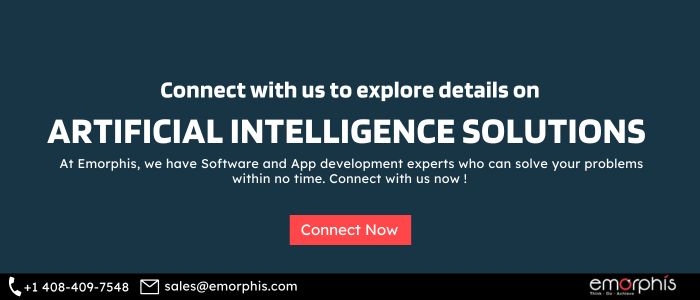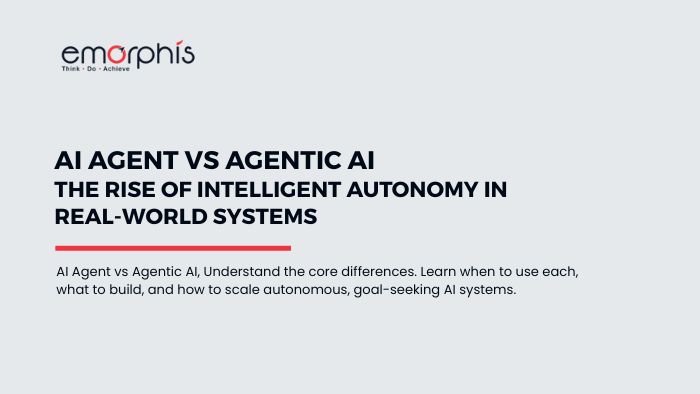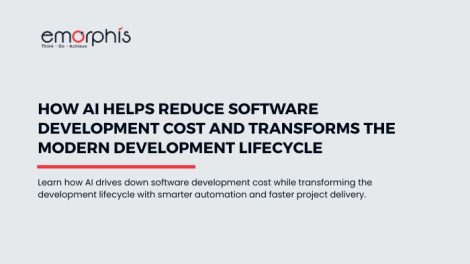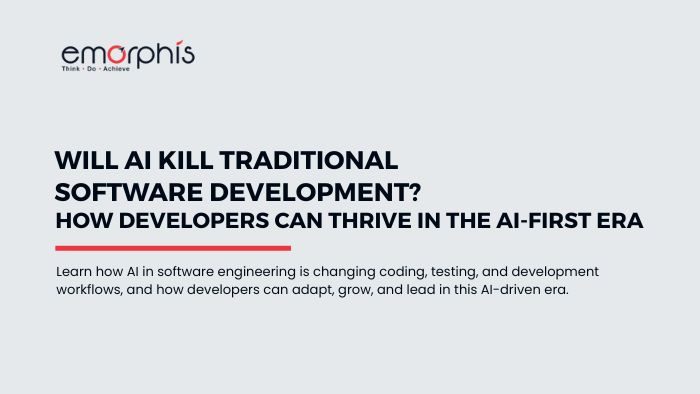Introduction
The ongoing debate of AI agent vs agentic AI is reshaping how we build intelligent systems. As AI shifts from task automation to autonomous reasoning and goal setting, it’s essential to understand this distinction, not as buzzwords, but as architectural choices that define future capabilities.
For AI developers, product teams, and research engineers, this comparison matters now more than ever. Whether you’re looking to build AI agents for customer support or planning to develop agentic AI systems that learn and evolve, the stakes of this decision are high. This article examines the distinctions between AI agents and agentic AI, enabling you to make informed, strategic, and future-proof technical decisions.

What is Agent AI?
An AI agent is a program or system that can take actions in an environment based on input, tools, or goals provided to it. These agents:
- Operate within clear boundaries
- Follow defined prompts or workflows
- Rely on LLMs to parse and execute commands
- Often use frameworks like LangChain, CrewAI, or ReAct
You might use an AI agent to automate email responses, query databases, or perform task sequencing. However, in the AI agent vs agentic AI discussion, AI agents stop at execution; they don’t learn or evolve unless explicitly reprogrammed.
What is Agentic AI?
Agentic AI represents the next evolution. These systems don’t just act—they decide what to do, often breaking down complex goals into sub-goals, learning from failures, and iterating toward better outcomes.
Core capabilities of agentic AI include:
- Persistent memory and reflection
- Goal generation and prioritization
- Continuous learning from feedback
- Use of multiple tools dynamically
In the ai agent vs agentic ai context, agentic systems are not passive executors—they are autonomous collaborators. Examples include Devin (software engineer agent), AutoGPT, and OpenInterpreter.
Understanding the Divide: AI Agent vs Agentic AI
At a glance, the terms AI agent and agentic AI may seem interchangeable. However, the differences become crucial when you move from theory to deployment.
An AI agent is task-oriented. It can navigate environments, call APIs, use tools, and complete multi-step processes based on external goals. In contrast, agentic AI is more than a smart executor; it is a self-directed, adaptive, and reflective system capable of setting sub-goals, learning from outcomes, and optimizing its behavior over time.
In the battle of AI agent vs agentic AI, the real distinction lies in autonomy, memory, and the depth of reasoning.
Developers and technical leaders must consider this when choosing to build intelligent agents with memory and reasoning or when scaling AI architectures for real-world applications.
Key Differences Between AI Agent vs Agentic AI
Core Capabilities and Behavior
| Dimension | AI Agent | Agentic AI |
|---|---|---|
| Autonomy Level | Reactive – Executes predefined goals | Proactive – Sets, adapts and reprioritizes goals |
| Goal Handling | Follows static, user-defined objectives | Generates sub-goals, reprioritizes dynamically |
| Planning Capability | Step-based, often rule-bound | Recursive, hierarchical, and self-correcting planning |
| Learning & Adaptation | No learning from outcomes unless externally updated | Learns from environment, user feedback, and internal evaluations |
| Memory | Stateless or short-term (within a session) | Long-term, contextual, and persistent memory over multiple tasks |
| Initiative | Waits for prompts or commands | Can initiate actions autonomously based on internal reasoning |
| Tool Use | Predefined tool calls with hardcoded paths | Selects and sequences tools dynamically as needed |
| Feedback Loops | Lacks internal feedback mechanisms | Reflects on outcomes and adjusts strategy accordingly |
| Flexibility | Limited to specific task domains | Operates in open-ended or uncertain environments |
| Task Type | Execution of known, defined workflows | Exploration of ambiguous, evolving problems |
Cognition, Collaboration & System Design
| Dimension | AI Agent | Agentic AI |
|---|---|---|
| Cognitive Abstraction | Operates on direct prompts and surface-level tasks | Understands abstract goals and can build internal models |
| Multi-Agent Collaboration | Typically operates in isolation or single-agent mode | Coordinates with other agents for distributed goal achievement |
| Error Recovery | Requires manual rerun or human intervention | Can detect failure and retry or adjust strategy autonomously |
| Use of RAG | RAG is used statically for context injection | RAG is dynamically used during planning, reasoning, and reflection |
| Prompt Engineering Dependency | High – tightly bound to prompt templates | Low – can generalize or modify behavior without prompt rewrites |
| Explainability | Responses are traceable to prompts and tools | May require higher-order traceability and system-level logs |
| Agent Identity | Task-focused; identity not persistent | Long-term agent identity with evolving knowledge and behavior |
| Statefulness | Often stateless between executions | Maintains and evolves internal state over time |
| Domain-Specificity | Requires tuning for each new domain | More generalizable with reasoning across multiple domains |
| Evaluation Strategy | Pass/fail output quality or tool accuracy | Measures include task performance, learning over time, and goal evolution |
| Real-World Analogy | A skilled worker following instructions | A self-managing teammate who understands goals and adapts to changes |
Why AI Agent vs Agentic AI Matters for Builders and Businesses
If you are building AI into your product stack, the AI agent vs agentic AI decision can determine scalability, maintainability, and the level of human oversight required.
AI agents are excellent for:
- Automating repetitive workflows
- Connecting LLMs with APIs, databases, or internal tools
- Performing rule-based, goal-constrained tasks
However, agentic AI systems are ideal when:
- Tasks are open-ended and require adaptive decision-making
- The system must learn, reflect, and evolve
- You need goal-formulating agents that explore solutions, not just execute commands
Many businesses looking to build a multi-agent AI system for research, operations, or customer interaction are starting to migrate toward agentic AI models due to their flexibility and long-term value.
Choosing What to Build: Transactional Guidance
If you’re evaluating which type of AI system to build, ask yourself:
- Does the task need multi-turn reasoning or just task execution?
- Will the agent interact with unpredictable environments or well-defined APIs?
- Do I need explainable AI agent behaviors, or will adaptive decision-making create a black box?
For straightforward automation, you may buy or build an AI agent with LangChain or CrewAI. But if you’re creating next-gen autonomous systems, it’s time to explore building an agentic AI framework with embedded memory, real-time learning, and dynamic planning.
Architecture Breakdown: Under the Hood of AI Agent vs Agentic AI
Why memory, planning, and self-direction change everything when you build agentic AI systems
Understanding the architectural distinction in ai agent vs agentic ai is critical for any team looking to scale AI from simple task execution to intelligent autonomy. Both use LLMs at the core, but what surrounds the model determines whether you’re building an AI-powered assistant or an autonomous decision-maker.
Let’s break down the tech stack differences that define this evolution.
The architecture of an AI Agent
Most AI agents today use a combination of LLMs, prompt templates, and tool execution frameworks like LangChain, ReAct, or CrewAI. Their execution typically looks like this:
- Input Prompt: User goal or instruction
- Planner (optional): Hardcoded or template-based task breakdown
- Tool Use: API calls, Python functions, DB queries
- Response: LLM-generated output
Memory: Minimal or ephemeral, often limited to the session-level context
Control Flow: Determined by hardcoded chains or prompt flow
Behavior: Task-specific; doesn’t change unless reprogrammed
This works well for automation, but not for scenarios where context evolves or decisions need reflection.
The architecture of Agentic AI
In contrast, agentic AI architectures add layers of memory, dynamic planning, and feedback-driven improvement on top of the LLM.
Typical agentic flow:
- Initial Goal (internal or external)
- Dynamic Planner: Generates a plan, not just a response
- Context Retriever (RAG + Memory): Pulls from external knowledge + prior experience
- Toolchain Selector: Picks the right tool (or creates one)
- Execution & Monitoring: Acts, observes, and evaluates results
- Reflection Module: Assesses what worked or failed
- Memory Writer: Logs results for future reference
- Loop: Modifies future strategy accordingly
Memory: Persistent and structured (e.g., via Redis, Chroma, Weaviate)
Planner: Goal-oriented, recursive, often multi-agent
Behavior: Self-improving, adaptive, and state-aware
In short, when comparing ai agent vs agentic ai, think of it like this:
- AI Agent: “Do this task.”
- Agentic AI: “Figure out how to get this done, monitor yourself, learn, and improve next time.”
Component-Level Comparison
| Component | AI Agent | Agentic AI |
|---|---|---|
| LLM Core | GPT-4, Claude, etc. (single use) | GPT-4, Claude, Gemini (with long-context/memory use) |
| Planner | Predefined chains (LangChain, ReAct) | Dynamic planners with sub-goal generation |
| Tool Execution | LangChain, CrewAI, or scripted functions | Adaptive orchestration of multiple tools and APIs |
| Memory | None or temporary | Persistent memory store (Redis, Chroma, etc.) |
| State Tracker | Optional (if any) | Required — tracks agent history, outcomes, adjustments |
| RAG Usage | Context injection only | Context + behavioral modification |
| Reflection Module | Not present | Integrated and essential for continuous learning |
Real-World Use Cases: AI Agent vs Agentic AI in Action
From task automation to autonomous execution: where AI agent vs agentic AI truly diverge
While architectural comparisons help, nothing clarifies the ai agent vs agentic ai divide like real-world deployment. Both have value, but they excel in very different types of problems.
Below are real-world examples across verticals that highlight when a traditional agent works, and when you’ll need to build agentic AI instead.
Healthcare
| AI Agent | A symptom checker chatbot that follows triage flowcharts and refers to a doctor after scoring symptoms. |
| Agentic AI | A goal-seeking virtual clinician that adapts diagnostic paths based on patient history, flags anomalies in real-time, and learns from outcomes to improve future decision trees. |
In ai agent vs agentic ai terms, the former acts like a clinical assistant. The latter evolves into an autonomous digital diagnostician.
Fintech
| AI Agent | An automation agent that processes invoices or flags outlier transactions using rule-based logic. |
| Agentic AI | A self-improving fraud detection system that adapts to emerging scam patterns, collaborates with other agents to validate financial anomalies, and rewrites its own detection policies over time. |
Building agentic AI in fintech is critical where patterns shift rapidly and human oversight lags behind real-time fraud evolution.
DevOps / SRE
| AI Agent | A deployment bot that runs CI/CD scripts when prompted or triggered by a scheduler. |
| Agentic AI | An autonomous reliability agent that detects anomalies, triages service failures, correlates root causes, and iterates over runbooks — all while learning from prior incidents. |
In agent AI vs agentic AI, the difference is uptime insurance: one obeys, the other protects proactively.
Legal / Knowledge Work
| AI Agent | A document summarizer that converts 200-page case files into bullet points. |
| Agentic AI | An autonomous legal research analyst that extracts precedent patterns, compares case logic, proposes counter-arguments, and adjusts based on verdict outcomes. |
For legal firms or compliance-heavy industries, building agentic AI systems can massively accelerate research and decision support.
Manufacturing / Quality Ops
| AI Agent | A tool-monitoring assistant that alerts operators when thresholds are exceeded. |
| Agentic AI | A full-stack plant intelligence agent that predicts failures, reorders inventory, reroutes process flow, and negotiates decisions with other systems based on KPIs. |
As factories evolve into autonomous environments, agentic AI becomes the control layer, not just a monitoring dashboard.
Product Development Strategy: AI Agent vs Agentic AI
Choosing the right path to build intelligent systems that scale, with the right level of autonomy
As teams race to build LLM-powered systems, the decision point often becomes:
Should we build an AI agent, or commit to agentic AI from the start?
This section explores the practical product strategy behind ai agent vs agentic ai, so you can make architectural, resourcing, and roadmap decisions that align with your goals.
Development Complexity & Architecture
| Aspect | AI Agent | Agentic AI |
|---|---|---|
| Architecture | Simple chain of prompts + tools | Modular system with memory, planner, reflection, tools |
| Development Time | Rapid to prototype and iterate | Requires upfront system design and orchestration logic |
| Infrastructure | Stateless or ephemeral sessions | Persistent memory store, planning loop, context tracker |
AI agents are ideal when speed is key and your problem space is structured.
Agentic AI is necessary when your product must adapt, learn, or reason across time.
Use Case Fit: When to Build What
| Use Case Type | Go With AI Agent | Go With Agentic AI |
|---|---|---|
| Simple task automation | ✅ | |
| Repeatable workflows | ✅ | |
| Evolving, multi-turn goals | ✅ | |
| Reflection on outcomes | ✅ | |
| Autonomous collaboration | ✅ | |
| Goal reprioritization | ✅ |
If your system needs to just do what it’s told, build an AI agent.
If it needs to decide what to do, why to do it, and improve over time, you need to build agentic AI.
Tech Stack Choices
| Component | AI Agent Stack | Agentic AI Stack |
|---|---|---|
| Prompt Management | LangChain, CrewAI, Guidance | LangGraph, AutoGen, OpenDevin |
| Tool Integration | LangChain tools, OpenAI function calling | Autonomous tool planners + chain-of-thought tool usage |
| Memory | Session-based context | Vector DBs + Redis + semantic memory over time |
| Planning Logic | Prompt templates or finite-state agents | Dynamic planning engines with feedback and reflection |
Team Skills & Build Investment
| Factor | AI Agent | Agentic AI |
|---|---|---|
| Skills Needed | Prompt engineering, LLM tuning | System architecture, memory, planning, reasoning |
| Dev Team Size | Small (1–3 engineers) | Mid-to-large cross-functional AI team |
| Testing Complexity | Simple output validation | Requires continuous behavior evaluation |
Time-to-Market vs Capability Time-to-Market vs Capability
| Criteria | AI Agent | Agentic AI |
|---|---|---|
| Time-to-Market | ✅ Very fast | ❌ Slower — requires foundational build |
| Long-Term Value | ❌ Plateaus fast | ✅ Increases over time through learning |
| Differentiation | ❌ Easily replicable | ✅ Architecturally defensible moat |
Many companies start with AI agents and then hit a ceiling, where they can’t add autonomy, learning, or resilience without a major redesign. That’s the inflection point where AI agent vs agentic AI becomes a strategic decision.
Technical Challenges: Where Systems Break
AI Agent Limitations
- Stateless by design — no persistent memory, so each run starts from zero.
- Brittle planning — relies on predefined prompts or static flows.
- Tool reliability issues — no logic to recover from tool failures or retries.
- No self-evaluation — can’t improve unless reprogrammed.
AI agents are lightweight, but they can’t handle unpredictability or evolving goals.
Agentic AI Challenges
- Memory overhead — persistent memory can become noisy or misleading without curation.
- Increased latency — reflection and planning loops cost time and tokens.
- Harder debugging — recursive logic and internal planning make behavior opaque.
- Tool orchestration — dynamic tool selection increases surface area for errors.
- Multi-agent coordination — agents can conflict without clear goal alignment.
To build agentic AI, you’re not just chaining LLM calls; you’re designing a full system that reasons, adapts, and monitors itself.
Future Outlook: Why Agentic AI Will Dominate
The AI landscape is shifting:
- LLMs like GPT-4o, Claude, and Gemini support longer context, tool use, and memory features built for agentic use cases.
- Frameworks like AutoGen, LangGraph, Devin, and OpenDevin are investing heavily in agentic capabilities.
- Enterprises want AI that can handle uncertainty, strategy, and collaboration, not just prompt-response bots.
In short, AI agents are a phase. Agentic AI is a direction.
Companies building agentic systems today will own the architecture, workflows, and control layers of intelligent automation tomorrow.

Conclusion
The comparison of AI agent vs agentic AI is no longer theoretical; it’s foundational to how intelligent systems are being built today. AI agents have proven effective for prompt-based automation and narrow tasks, offering speed and simplicity.
But as products evolve to demand adaptability, memory, dynamic planning, and multi-step reasoning, agentic AI becomes essential. It’s not just about executing commands anymore; it’s about systems that can set goals, learn from outcomes, and self-correct in real time.
If you’re scaling intelligent products, the shift toward agentic architectures is inevitable. Whether you’re enhancing existing agents or building from scratch, the next generation of AI systems will require reflection, persistence, and autonomous collaboration.
Now is the time to start. Begin by augmenting your agents with memory and planning. Experiment with open-source frameworks designed for agentic flows. Architect for autonomy. Don’t wait until your current agents hit a ceiling; start building the future with agentic AI today.
Further, check our AI Development Services







